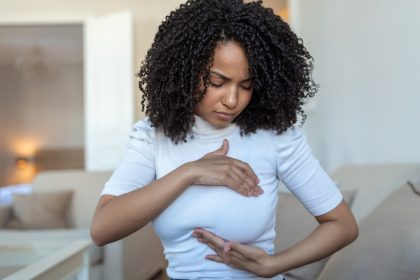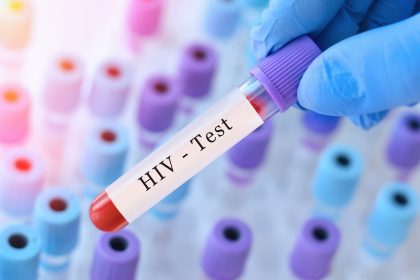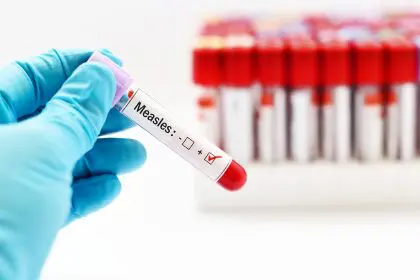The HIV epidemic continues to disproportionately affect major urban centers across the United States, with southern cities facing particularly severe challenges. Health department data shows stark disparities in infection rates, with some cities reporting numbers comparable to those in developing nations. While medical advancements have transformed HIV from a fatal to a manageable chronic condition, barriers to prevention and treatment persist across many urban communities.
The urban landscape
Miami leads the nation with the highest concentration of HIV cases, reporting 1,105 cases per 100,000 residents. This rate significantly exceeds the national average and highlights ongoing challenges in public health response. Economic disparities, limited healthcare access, and social stigma create significant obstacles to prevention and treatment efforts.
The data reveals a clear pattern: southern cities account for seven of the ten areas with the highest HIV rates, pointing to regional challenges in healthcare access and prevention. This concentration reflects broader healthcare disparities in the southern United States, where factors such as poverty, limited healthcare infrastructure, and social stigma intersect to create heightened vulnerability to HIV transmission.
Top 10 cities by HIV prevalence
Miami, Florida
(1,105 per 100,000) The city faces unique challenges with its diverse population and tourism industry. Limited healthcare access and high poverty rates in certain neighborhoods contribute to continued transmission rates. Local health departments have expanded testing programs and increased access to preventive medications. Community organizations work to bridge cultural and language barriers that often prevent individuals from seeking testing and treatment. The city has implemented targeted outreach programs in neighborhoods with the highest rates of new infections.
New Orleans, Louisiana
(1,000 per 100,000) High rates of sexually transmitted infections and socioeconomic challenges drive the epidemic. The city has implemented targeted interventions in high-risk neighborhoods, focusing on education and testing accessibility. Healthcare providers partner with local organizations to reach vulnerable populations, offering mobile testing units and community health forums. Recent initiatives focus on expanding access to PrEP and addressing the social determinants of HIV transmission.
Baton Rouge, Louisiana
(950 per 100,000) Late diagnoses remain a significant concern, with many cases identified only after progression to AIDS. Community health programs emphasize early detection through free testing services. The city has established partnerships with faith-based organizations to reduce stigma and increase testing rates. Healthcare providers focus on linking newly diagnosed individuals to immediate care, recognizing that early treatment significantly reduces transmission risk.
Jackson, Mississippi
(900 per 100,000) The crisis particularly affects African American communities, compounded by inadequate healthcare infrastructure. Mobile testing units now serve areas with limited medical access. Local health departments work to address social and economic barriers to care, including transportation challenges and limited health insurance coverage. Community health workers provide education and support to help individuals navigate the healthcare system.
Baltimore, Maryland
(850 per 100,000) Intravenous drug use contributes significantly to transmission rates. The city has expanded harm reduction programs, including needle exchange services and increased access to preventive medication. Public health officials focus on comprehensive care that addresses both HIV and substance use disorders. Community outreach workers connect with high-risk populations to provide education and resources for prevention.
Atlanta, Georgia
(800 per 100,000) Some neighborhoods report infection rates higher than those in developing countries. Local organizations focus on community-based health initiatives and improved access to preventive care. The city has implemented innovative programs to reach young adults through social media and peer education. Healthcare providers work to address the specific needs of LGBTQ+ communities, which face disproportionate risk.
Washington, D.C.
(750 per 100,000) The capital city sees disparities particularly affecting African American and Latino populations. Officials have implemented aggressive testing and treatment programs. The city provides comprehensive support services, including housing assistance and mental health care for individuals living with HIV. Public health campaigns focus on reducing stigma and increasing awareness of prevention options.
Memphis, Tennessee
(700 per 100,000) Late diagnoses and limited sexual health education contribute to ongoing transmission. New initiatives focus on expanding medication access for uninsured individuals. The city partners with community organizations to provide comprehensive sex education and HIV prevention information. Healthcare providers work to address the specific needs of young adults, who face increasing infection rates.
Orlando, Florida
(650 per 100,000) The transient tourist population presents unique challenges for consistent healthcare delivery. Local clinics partner with businesses to reach at-risk groups. The city has implemented programs specifically designed to address the needs of Latino communities, including bilingual health education and culturally competent care. Public health officials work to maintain continuity of care for seasonal residents and visitors.
Houston, Texas
(600 per 100,000) Despite extensive public health resources, disparities in healthcare access persist. The city emphasizes educational workshops and support systems for affected individuals. Local health departments provide comprehensive services, including mental health support and substance use treatment. Community organizations focus on reaching immigrant communities that may face barriers to accessing traditional healthcare services.
Key factors driving transmission
Several consistent patterns emerge across these cities:
- Limited access to routine healthcare and preventive services
- High poverty rates in affected neighborhoods
- Inadequate sexual health education and prevention resources
- Stigma surrounding testing and treatment
- Delayed diagnosis and treatment initiation
- High rates of concurrent sexually transmitted infections
- Cultural and linguistic barriers to accessing care
- Limited health insurance coverage and financial resources
- Social determinants affecting healthcare access
Prevention strategies
Public health departments across these cities have implemented various approaches to combat new infections:
Early intervention programs emphasize routine testing and immediate treatment initiation. Healthcare providers now recommend testing as part of regular medical checkups, working to normalize HIV screening as routine preventive care.
Preventive medication access has expanded significantly. Programs offering pre-exposure prophylaxis (PrEP) target high-risk populations, providing medication that can prevent HIV infection. Cities work to increase awareness of PrEP and remove barriers to access.
Community outreach efforts focus on education and stigma reduction. Mobile health units bring testing and treatment to underserved neighborhoods, while peer educators work to build trust and understanding in affected communities.
Looking ahead
While these cities face significant challenges, health officials see progress in treatment and prevention methods. Advanced medications and testing procedures offer improved options for reducing transmission rates. Success requires sustained funding for public health programs and improved healthcare access.
Officials emphasize the need for comprehensive approaches that address both medical and social factors contributing to HIV transmission. This includes expanding access to healthcare, addressing poverty and housing instability, and working to eliminate stigma surrounding HIV testing and treatment.
This story was created using AI technology.














